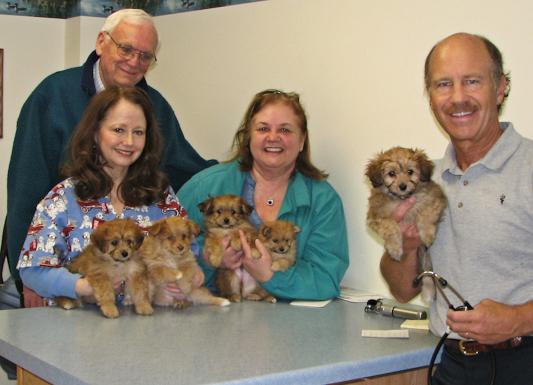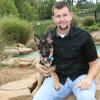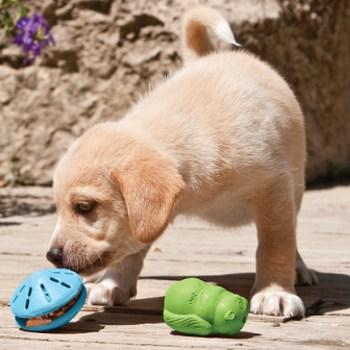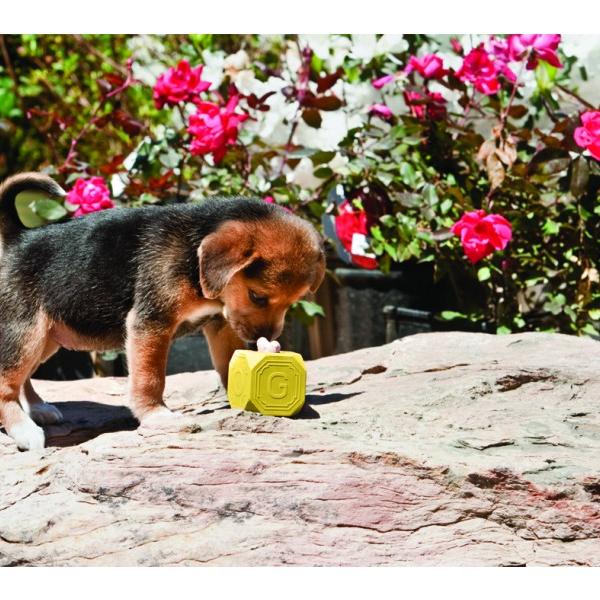 Have you ever wished your dog would be more obedient? Or that he would just do some of the basics that other dogs can do? Well, with a little guidance and some consistency, you can have Fido honor-roll-ready! Today, I am going to discuss how to accomplish this.
Have you ever wished your dog would be more obedient? Or that he would just do some of the basics that other dogs can do? Well, with a little guidance and some consistency, you can have Fido honor-roll-ready! Today, I am going to discuss how to accomplish this.
In the past we have touched on puppy training and the importance of starting very young. And obedience training is no exception! There are many different ways to teach your dog the basics. Today I want to focus on how to teach a puppy. Don't worry if your dog is a little older. These tricks and methods will work for dogs of any age.
First, I want to share the basic model to follow: queue, behavior, reward. It's that simple! There will be some other things thrown in there too. But if you can remember that sequence, you will succeed.
Teach Your Puppy How to Sit
-
 Set up the training area so that there are as few distractions as possible.
Set up the training area so that there are as few distractions as possible. - Make sure you have plenty of very small treats available. It is also a good idea to make sure your puppy is hungry. This will make him more interested in the treats.
- Place the treat in your fingers so your puppy can see it and get his attention.
- Slowly raise the treat over your puppy's nose then upward to lure him into a sitting position.
- As soon as his butt hits the floor, immediately give him the reward and praise him.
- Once your puppy starts doing this very fast, you can say "Sit" just before he does to reinforce the command.
This process will create the verbal queue of "Sit" as well as the hand gesture for the behavior. You may ask, "Why not start saying sit right from the start?" All dogs pick up on physical gestures faster than verbal queues, so luring will be much faster. Keep in mind the first few attempts may take a moment for your puppy to understand. He should get faster each time you try.
Teach Your Puppy the Down Command
The process is the same with teaching Down. The only difference is that you are taking the treat and lowering it under your puppy's nose. This will encourage him to lie down.
This may take a little more patience than Sit, but most dogs catch on very quickly after the first successful attempts. Once again, add the verbal queue of your choice when your puppy is in the Down position.
Teach Your Puppy to Come
Another very important behavior to teach is Come. The process is a little different, but the basic sequence is the same. The setup for this training is going to be different as well.
-
 Start with your puppy on a leash in a low distraction environment. You can even use a longer leash than normal if you would like to add distance.
Start with your puppy on a leash in a low distraction environment. You can even use a longer leash than normal if you would like to add distance. - Again, make sure you have appropriate treats.
- Wait for your puppy to wander out towards the end of the leash.
- Say your puppy's name and make a noise to get his attention, like a kissy noise or patting your leg.
- When he looks in your direction, encourage him to come to you.
- Give the queue "Come" when he starts moving toward you.
- Reward your puppy with a treat as soon as he gets to you. Give him lots of praise!
Continue Your Puppy's Training
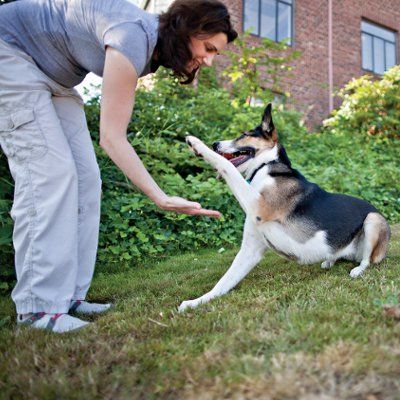 These steps will give you a good starting point for all of the basic commands. This helps build a foundation in low distraction environments. And from there you can slowly add distractions and train in other location. With time, repetition, and consistency, you can move towards the reliability you're looking for.
These steps will give you a good starting point for all of the basic commands. This helps build a foundation in low distraction environments. And from there you can slowly add distractions and train in other location. With time, repetition, and consistency, you can move towards the reliability you're looking for.
Remember as you start making the training scenarios more difficult, you should reward more often. This will keep your puppy's attention and keep him motivated. Eventually you will get to a time and scenario where he doesn't succeed as you would like. At this point, it's important to take a step back and make things a little easier for him. When he succeeds again, give him a great reward and praise, then attempt a slightly more difficult situation.
Once you have mastered these 3 behaviors, your puppy can move on. More advanced behaviors that can be taught are Stay, Go to Bed, and Heel, plus fun tricks like High Five, Shake, and Play Dead. These are things you can look forward to working on. But for now it's important to focus on the basics. Always remember to have fun while training! It should be rewarding for both you and your puppy. Stay tuned for discussions on more advanced training behaviors. Until then, stay motivated and active!

